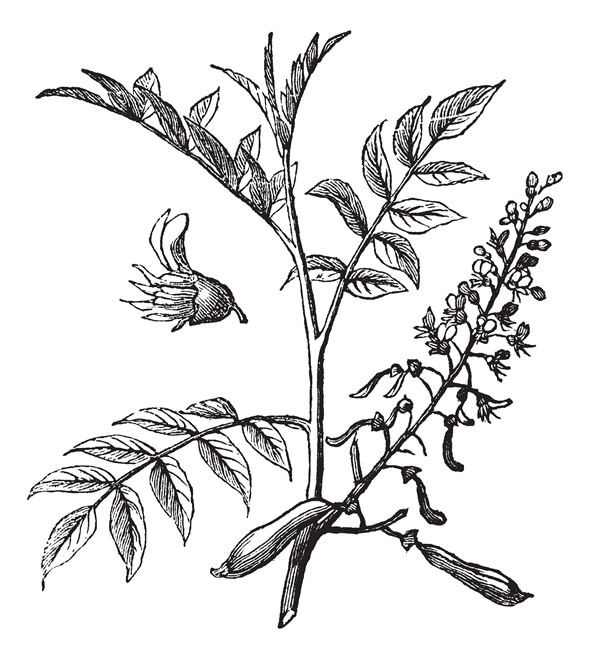
Balsam of Peru Allergy
Balsam of Peru is a natural balsam that comes from the Myroxylon tree grown in Central and South America. It contains a mixture of substances related to the fragrance and flavoring materials vanilla, clove and cinnamon. It is used to flavor cakes, pastries, baked goods, soft drinks, chocolate, ice cream, chewing gum, wines, liquors and sometimes even tobacco. The Latin name for Balsam of Peru is Myroxylon pereirae and it is also referred to as Peruvian balsam.

Peru Balsam or Myroxylon peruiferum, vintage engraved illustration. Trousset encyclopedia (1886 - 1891). Image Copyright: Morphart Creation / Shutterstock
Balsam of Peru extracts are found in a wide range of cosmetic products, perfumes and toiletries and may also sometimes be found in suntan lotions and insect repellents. This balsam is known to have antibacterial and antifungal properties and may also be found in some medicinal creams and ointments, cough syrups and lozenges, toothpaste, dental cements and hemorrhoid suppositories.
Allergic Reactions of Balsam of Peru
Balsam of Peru is a common cause of allergic contact dermatitis, which occurs when an allergen causes an immune reaction in the skin it has come into contact with. When this occurs, a person may experience the following symptoms:
- Red, sore, itchy skin
- Swelling and blisters
- In the case of oral exposure, inflammation of the mouth, lips and tongue
- In cases where Balsam of Peru has been swallowed, itching around the rectum.
Diagnosis
A diagnosis of this allergy is usually made through skin patch testing, which is performed by a dermatologist or nurse who specialises in dermatology.
Management
People with Balsam of Peru allergy are advised to avoid any contact with items that contain the substance or any related substances, which means using fragrance-free or unscented items. Rather than relying on a fragrance-free claim, people should check the ingredients of any products they plan to use on their skin to ensure that they do not contain a fragranced plant extract.
Treatment
If people with this allergy can avoid the allergens that trigger their symptoms, the skin problems should eventually clear up. However, if the symptoms of contact dermatitis are recurrent or severe, a person should consult their doctor who may suggest using the following treatments:
- Emollients – These moisturize the skin and prevent it from becoming dry
- Topical corticosteroids – Application of these ointments or creams can help to relieve severe symptoms
- Oral corticosteroids – These may be used to relieve symptoms that are more widespread
By using these types of treatments, a person can usually expect any symptoms of contact dermatitis to improve or resolve completely.
Sources
Further Reading
Last Updated: Aug 23, 2018























.png)









No hay comentarios:
Publicar un comentario